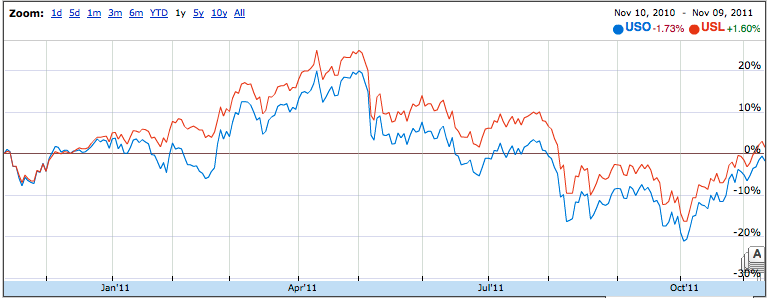 Author: CJ Brott, Capital Ideas
Author: CJ Brott, Capital Ideas
Covestor models: Macro Plus Income, ETF Only
Recently I was asked to explain my choice of the United States Oil Fund 12 Month ETF (USL) for oil exposure in the Capital Ideas ETF Only portfolio, rather than using another ETF, such as the United States Oil Fund (USO).
My reasoning is quite simple. USL has superior cost, performance, and correlation characteristics.
Cost – Both funds are commodity-based and hold the actual futures contracts. USO holds near-month only contracts. Thus it must roll over its entire portfolio of futures contracts each month, or twelve times a year. This is a very expensive proposition and the higher costs show quickly in performance. USL holds the near month and each of the next eleven months of the year. Therefore, its roll cost is minimized.
Performance – On a one year basis ending 9/30/11, the USO was down 12.1% while the USL was down just 8.42% for the same period. This is a result of cost and contract term structure, both of which show up in the relative benchmarks for each fund. According to the United States Oil Fund data, the USO benchmark for the period was -11.57% while the USL benchmark was -7.68%.
Correlation – I have observed that at times of market stress, when prices are at extremes, the correlation of USL to the WTI price of crude is closer than that of the USO. The history of USL is short, and this may change with time, but at the moment that is the situation I observe.
In summary, the ETF Only model holds crude as a hedge against higher energy prices. In order to hold the position for longer periods of time and to avoid the added variability of financial risk or additional leverage, the funds holding crude futures – rather than ETNs or leveraged positions – were chosen. The only two fitting that description were USO and USL. Of the two, I believe USL to be the superior choice.



